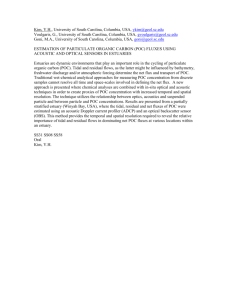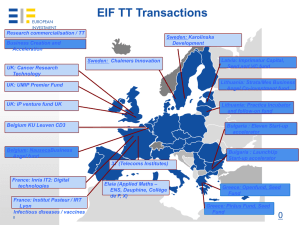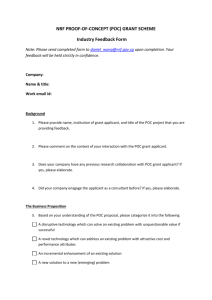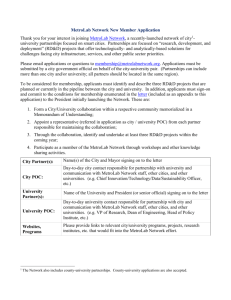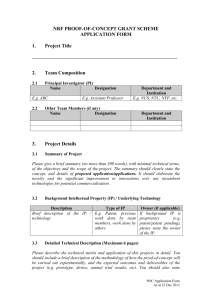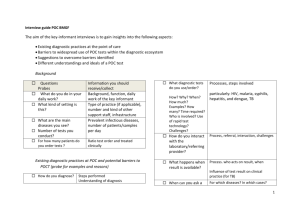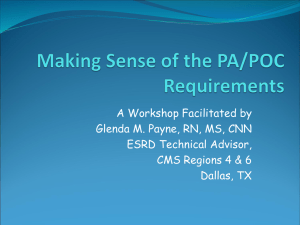Slide 1
advertisement
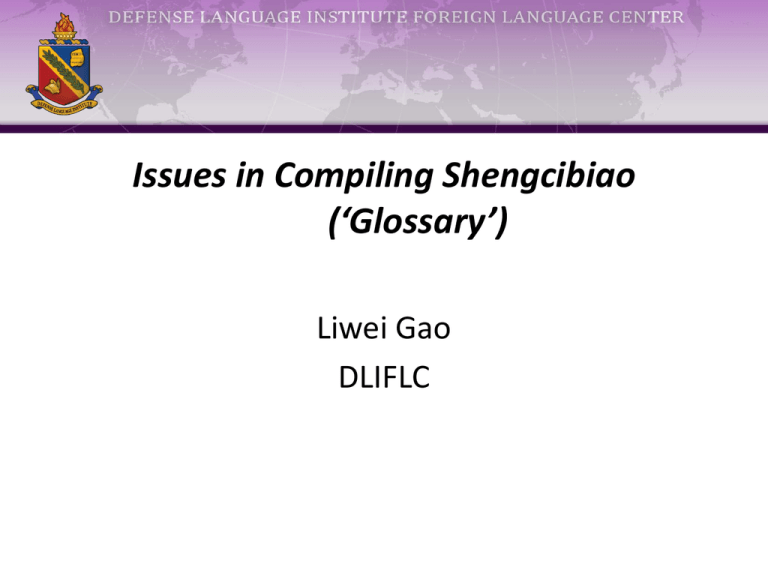
Issues in Compiling Shengcibiao (‘Glossary’) Liwei Gao DLIFLC I. Importance of an Effective Shengcibiao (‘glossary’) • Facilitate an accurate understanding of the word meaning in target language (TL) Facilitate rapid acquisition of new words Facilitate accurate learning of TL grammar Facilitate correct use of TL • • • II. Aspects of an Effective Shengcibiao (‘glossary’) • Part of speech (PoC)or no PoC? PoC helps students produce grammatical sentences *下课以后,先我锻炼身体,然后吃晚饭。 *早饭我吃了鸡蛋、面包,还牛奶。 * 我喜欢中国饭,也我喜欢日本饭。 • PoC may have to be decided in context (multiple PoC’s of one word): relatively poor Chinese morphology (inflectional) e.g., i. 留得青山在,不怕没柴烧。(v.) ii. 事情发生在去年。 (prep.) iii. 风在刮,雨在下。(adv.) iv. 钱我给他了。(v.) v. 狗给人偷了。(prep.) vi. 护士给他量了量血压。(prep.) • PoC is not always decided based on literal meaning in English. e.g., i. 两国之间建立起了牢不可破的友谊。 (之间 means ‘among, between’, but it’s a noun here, not a preposition) ii. 以前王老师在大庆工作过。 (以前means ‘before’, but it’s a noun here, not an adverb.) • Example usages or no example usages? (should be included to minimize negative first language transfer) * 他的目很大。 * 我们去了一家很吃香的饭店吃饭。 * 我弟弟有樱桃小嘴。 * 我朋友上周末参观了我。 * 我每天晚上学习三个半点钟。 • Phrases to be included or not? *中国的全面积很大。(总面积) * 我爸爸不喝滴酒。(滴酒不沾) * 独立日我们邀请了亲朋来我们家烤肉。 (亲朋好友) * 飞机场工作人帮我们找到了我们的行李。 (工作人员) • Grammar note or no grammar note? *他去圣荷西飞机场见面他的朋友了。 *我还不知道如果我今年秋天要去上大 学。 * 李大为回去老家了。 * 他是韩国人和他也是美国人。 * 毕业以后我打算结婚我的女朋友。 • Many or one definition? -- Too many definitions can be confusing, particularly to beginners; -- If more than one definition has to be provided, the order of definitions given should not be random. • English translation -- Should match TL as closely as possible, not only in terms of general meaning but also grammatical features (e.g., transitivity), domain of usage, etc. E.g., 见面:meet/see someone 漂亮:beautiful -- For non-beginners, definition in TL should be given. E.g., 感到:觉得 • Proper nouns (PN) listed separately or not? -- Students, particularly beginners, often have a hard time recognizing PN’s. -- Listing PN’s separately can give students the wrong impression that they are unimportant. -- Teaching PN’s explicitly not only enlarges students’ vocab but teach them culture at the same time. • Pinyin transcription standardized or not? -- Spacing e.g., 成语, 短语,专有名词: shǒu zhū dài tù, nào yìjiàn, Wǔsì Qīngnián Jié -- Capitalization e.g.,专有名词: Xiānggǎng Zhōngwén Dàxué -- Tone marking e.g., neutral tone, tone sandhi: xiǎojiě (not xiǎojie/xiáojiě), yīdìng (not yídìng) III. Examples of an Ideal Shengcibiao 签字/簽字 qiānzì n./v. (v.o.) signature; to sign one’s name 签字后合同就生效了。 2. 和 hé conj. and (not connecting clauses) (跟;与) 小王和小张都在这儿工作。 3. 如果 conj. if (not meaning ‘whether’) (要 是) 如果今天不下雨,我们去郊外野餐吧? 1. IV. Concluding remarks -- Thoroughly annotated shēngcíbiǎo helps students in their ACCURATE mastery and use of TL, which in turn helps improve their proficiency -- Over-simplified shēngcíbiǎo may have unfavorable consequences (e.g., grammatical errors associated with L1 interference.) V. Selected references Li, Charles, & Sandra Thompson. Mandarin Chinese: a functional reference grammar. Berkely: University of California Press. Wang, Jenney. 2003. Word structure and how it matters in grammar. Paper presented at the annual CLTA/ACTFL meeting. Zha, Xinha. 2007. Can a Chinese double-syllable verbobject structure followed by another? Paper presented at the annual CLTA/ACTFL meeting. 谢谢!


